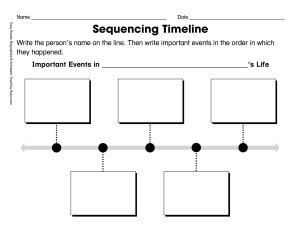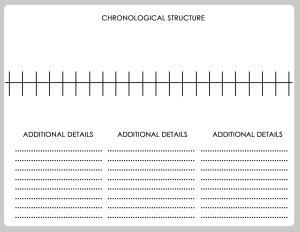Using Graphic Organizers Correctly
It’s much more important for a student to practice writing — the only way to build writing fluency — than to fill in a graphic organizer completely or perfectly.
Your content has been saved!
Go to My Saved Content.What is a graphic organizer? A graphic organizer is a visual display or chart that shows the relationship between ideas, facts, and information.

It can allow a third-grade student, for example, to chart out chronologically a summer vacation by writing specific information in each box in a connected series. Another graphic organizer might have three columns and require a seventh-grade student in a world history class to list the causes of WWII. Those causes are listed in the far left column, then, the middle column asks for effects, while the far right column requires the student to write in evidence or a source to accompany each cause and related effect.

A Pre-Writing Tool
Teachers carefully select a graphic organizer after deciding what type of writing they want their students to engage in -- narrative, argumentative, or informational. They then select specific skills for development in that type of writing. In a narrative writing assignment, does the teacher wish the child to develop sequential writing, or perhaps the focus will be on description and details? Determining this will help a teacher select the appropriate graphic organizer.
The ultimate purpose of utilizing a graphic organizer as a tool is to prepare students for writing. Simply put, a graphic organizer assists a student with thinking and is a pre-writing tool -- not the end product. Some young writers may need this thinking tool more than others. That said, a writer in your classroom might want to skip using a graphic organizer and be ready to dive into the writing. Let her.
Teachers need to remember they are not developing charters of information, but they are developing writers. The only way to build fluency in writing is to write.
Improve Writing by Writing
As I’ve seen in my many classroom observations, we teachers can get caught up with treating the graphic organizer as The Assignment, especially with struggling students. At some point, with learners who are struggling, we need to stop encouraging them to finish filling in those boxes or columns on the graphic organizer and move into what matters: the writing.
It’s much more important for a student to practice writing -- the only way to build writing fluency -- and stumble through stringing thoughts together this way than to fill in a graphic organizer completely or perfectly.
Lastly, grade only the writing and not the graphic organizer. This will help keep the focus where it really matters: on our students as writers.
What are your experiences with using graphic organizers in your classroom? What suggestions or tips can you offer, especially for novice teachers? Please share in the comments section below.
